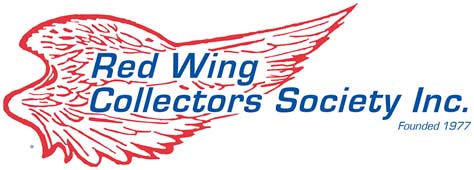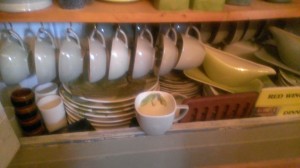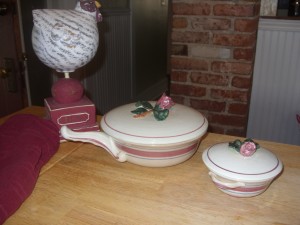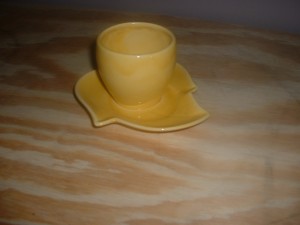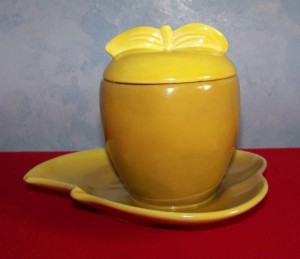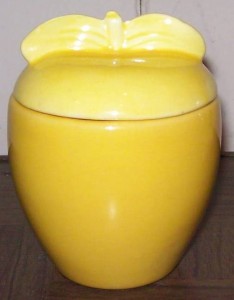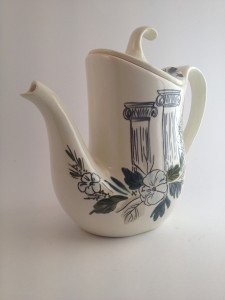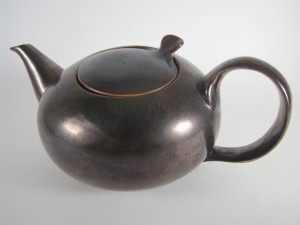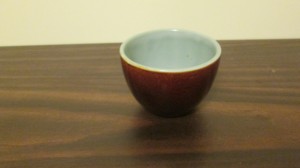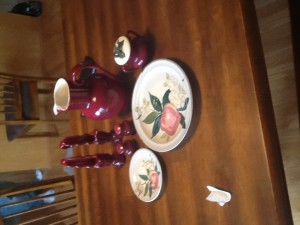Question:
I am hoping you might direct me to someone who can tell me the best way to remove a snow scene painted on my rust colored pitcher. I would like to restore it to its original color but do not want to damage the glaze. I do not know what kind of paint was used. It does not appear to be oil but could be acrylic. The entire pitcher, inside and out has been covered with greyish blue, matte finish paint. There is one spec of the original color on the bottom. It appears it may have been dipped for the background color and then the snow scene was painted on top.
Any suggestions would be greatly appreciated and I thank you very much for your time.
Sue
Answer:
Sorry but I don’t have a sure answer to this question as I have no experience with removing a large area of paint from dinnerware. Especially when the type of paint involved is unknown.
Here is what I would do if this were my pitcher and I was certain that I wanted to remove the painted scene, knowing it might look worse afterwards if my efforts are not successful. First, run hot water over the pitcher to see if the paint happens to be water soluble. If the water has some effect on the paint, soak the pitcher for a while to soften it. Gentle scrubbing with a non-metallic kitchen scrub pad may help. If that doesn’t work, try using a razor tool to remove the paint. Be sure to use a new razor, not a previously used razor that might have nicks in the blade. Careful, gentle but firm scraping should remove paint but until you try it’s impossible to gauge how successful this will be. A lot depends on the type of paint involved.
Hopefully the paint is now gone and no further steps are needed. I’ve used water and razor to successfully remove paint splatters from dinnerware, but not large areas like this painted scene. If paint still remains, my next step would be to try a solvent of some kind. I’d try adhesive remover, paint thinner, and nail polish remover in that order. If the glaze on the pitcher is intact then these solvents won’t harm it. Again, I’ve used these solvents on small spots but not on large areas.
I’m not sure what to do if paint remains after the above steps have been tried. Harsh chemicals or more intense scraping may harm or dull the glaze. I’d probably try paint or furniture stripper as a last resort but I have no experience with using them on dinnerware. Do not rub the pitcher with metallic pads (steel wool, Brillo pad, Chore Girl, etc) as they will leave metallic marks on the glaze.
Scraping of any kind will be difficult for the area inside the pitcher. If water or a solvent has no effect on this paint, consider leaving the pitcher as is with the painted scene intact.
Good luck!
Larry
